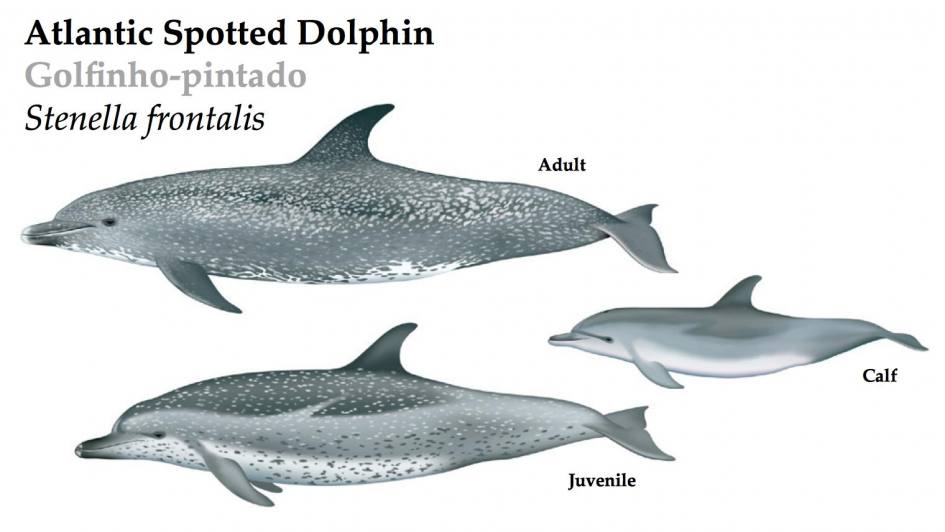
Atlantic spotted dolphins are very sociable. They are easy to recognize because of the unique coloration. Calves are completely dark grey, and after the degree of spottiness and their coloration pattern varies with age and location. But not all Atlantic spotted dolphins develops spots. For example, the population living in the Gulf Stream far offshore often lack spots.
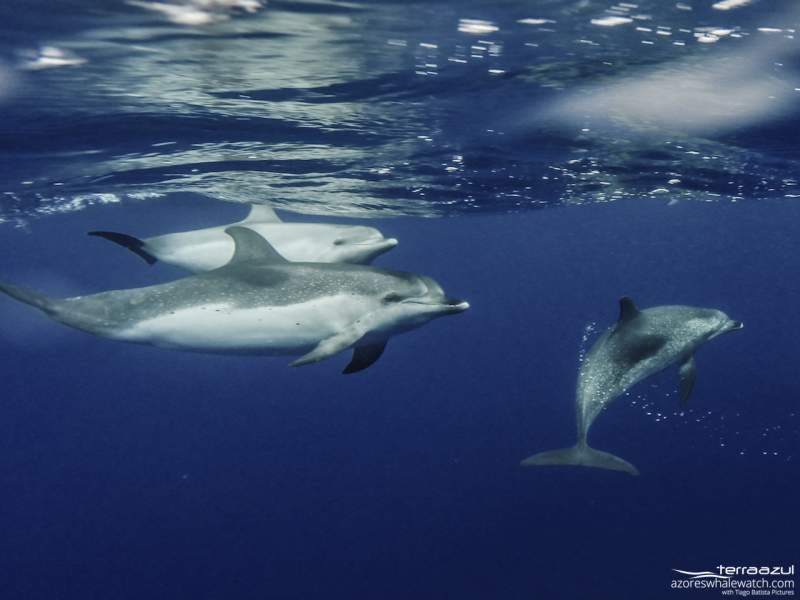
Two adults Atlantic Spotted Dolphins, and a juvenile on the background.
CHARACTERISTICS
- Latin name : Stenella frontalis
- Suborder : Odotonceti
- Family: Delphinidae
- Length : up to 2.3 m
- Weight : up to 150 kg
- Dive time : up to 10 minutes
- Dive depth: up to 250 m
- IUCN Status: Least concern
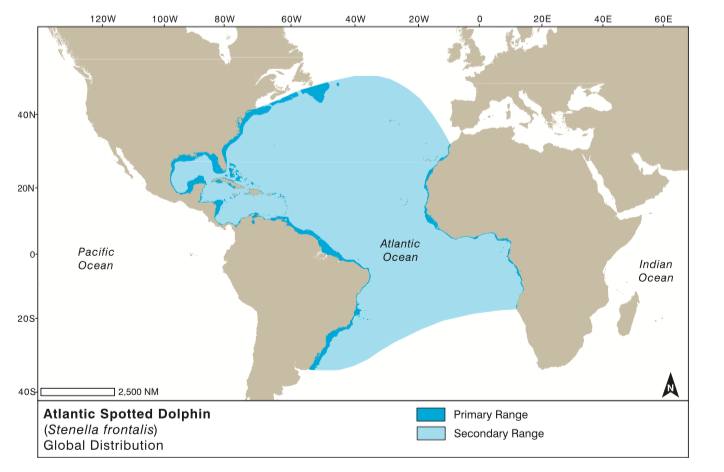
Worldwide distribution of Atlantic Spotted Dolphin (Stenella frontalis). Encyclopedia of Marine Mammals IIIrd Ed. Bernd Würsig, I. G. M. Thewissen & KIT M. Kovacs
DESCRIPTION
Color: Light and dark grey. On the body, the number of light dots increase with age.
Head: Tapering forehead.
Fins: Midway along the animal back and falciform.
Teeth: 30 to 42 conical teeth per jaw.
LIFE HISTORY
DIET
Schooling fish (e.g., herring, anchovies, sardines, mackerels), squids and other small invertebrates. In the Azores, when prey is abundant, Atlantic spotted dolphins are know to join different species of dolphins (e.g., common dolphin, bottlenose dolphin, striped dolphin) to feed on fish. The pods also hunts at night.
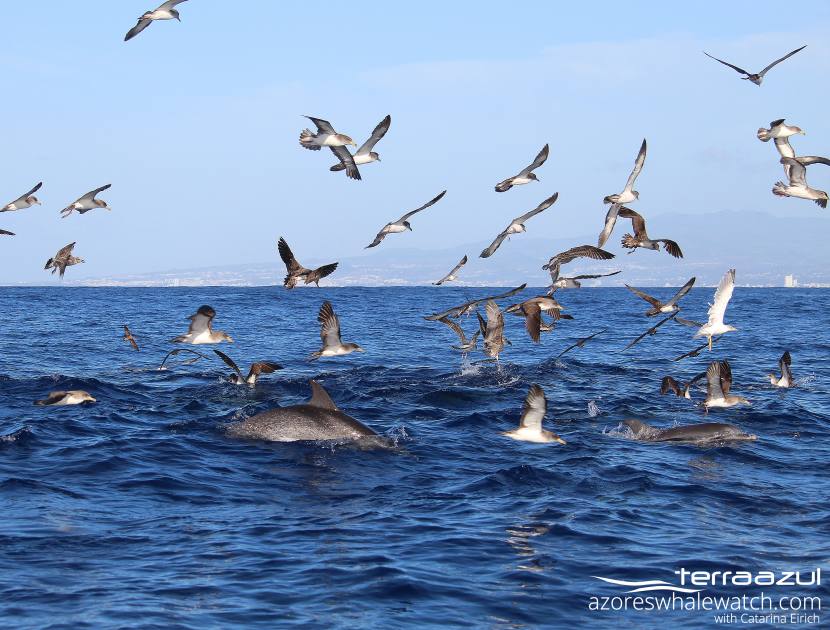
Pod of Atlantic Spotted Dolphins feeding, surrounded by Cory’s Shearwater (Calonectris diomedea borealis)
REPRODUCTION
The Atlantic spotted dolphins mate throughout the year. The gestation period lasts for 11 – 12 months, yielding a single calf. The female usually gives birth with the interval of 1 – 5 years with an average of 3 years. The youngster is nursed by its mother for 1 – 5 years, becoming sexually mature and starting to breed at 8 – 15 years old.
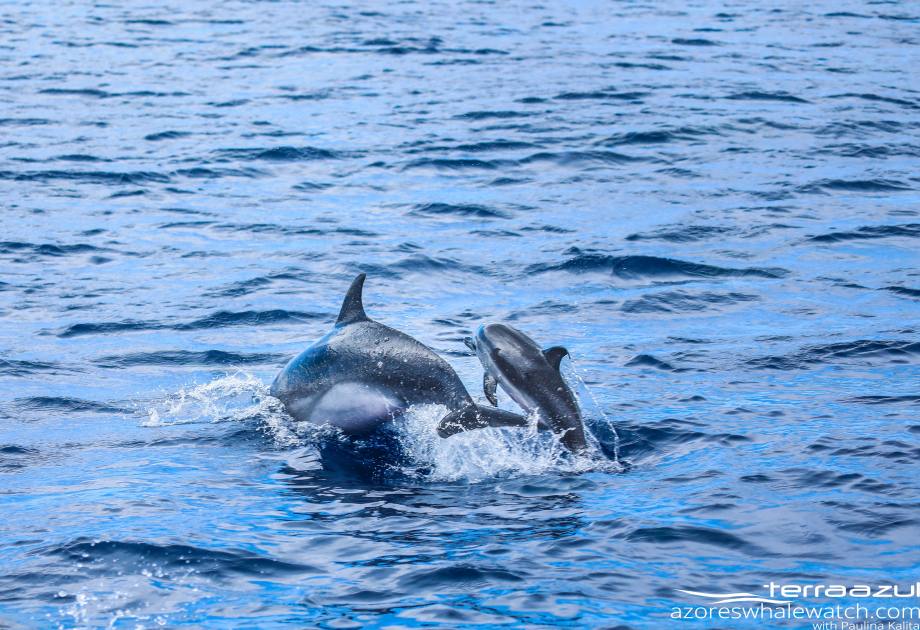
Mother and calf Atlantic Spotted Dolphin.
SOCIAL BEHAVIOR
Atlantic spotted dolphins are highly social animals. They have a complex social structure and within their pods, the dolphins are sometimes organized by age or sex. Each individual of a pod live in close relationships with each other and individual recognition is developed also vocally. Atlantic spotted dolphins are very careful to pregnant females and calves, protecting them from predators. These dolphins may form very small groups, consisting of just a few individuals, and large pods of up to several thousand dolphins in offshore areas.
VOCAL BEHAVIOR
They use a variety of whistles and groans to communicate to each other. Echolocation clicks are also used to detect the prey. Each of the Atlantic spotted dolphin has its own whistle frequency, which helps identificaion between individual dolphins. You can listen Atlantic Spotted Dolphins communicating and echolocating in this recording collected by the Team of Terra Azul.












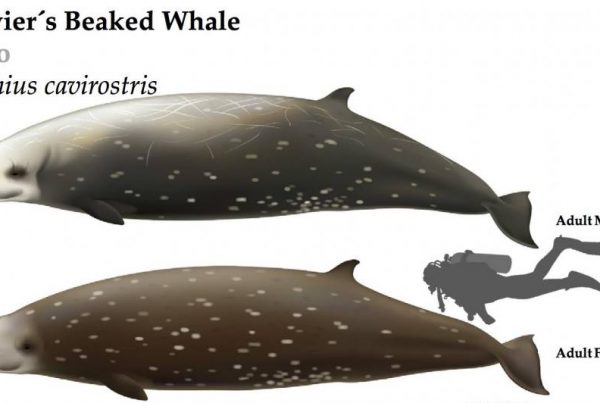
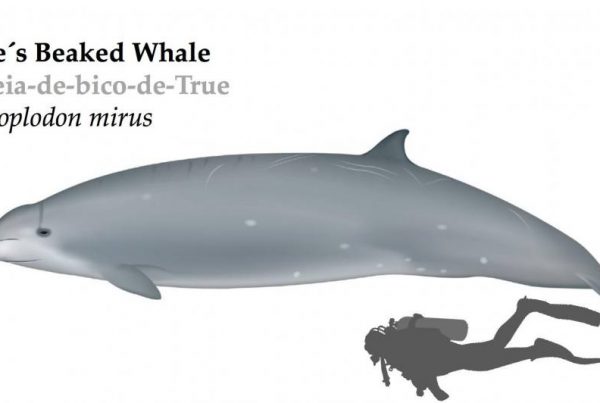
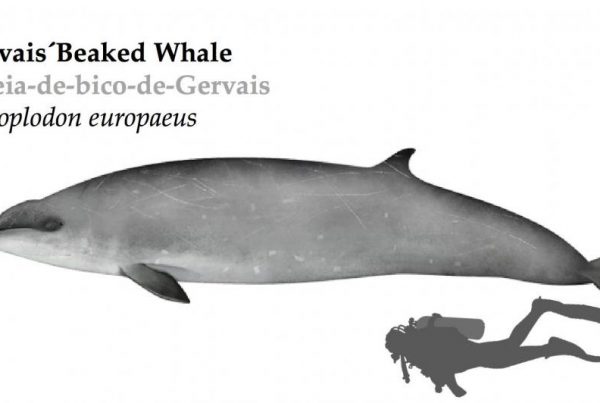



Your thoughts on this?